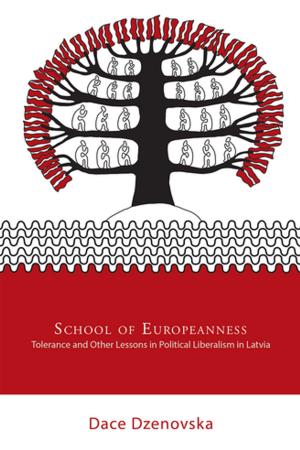Organizations at War in Afghanistan and Beyond
Nonfiction, Social & Cultural Studies, Social Science, Sociology| Author: | Abdulkader H. Sinno | ISBN: | 9780801458064 |
| Publisher: | Cornell University Press | Publication: | February 15, 2011 |
| Imprint: | Cornell University Press | Language: | English |
| Author: | Abdulkader H. Sinno |
| ISBN: | 9780801458064 |
| Publisher: | Cornell University Press |
| Publication: | February 15, 2011 |
| Imprint: | Cornell University Press |
| Language: | English |
"After we had exchanged the requisite formalities over tea in his camp on the southern edge of Kabul's outer defense perimeter, the Afghan field commander told me that two of his bravest mujahideen were martyred because he did not have a pickup truck to take them to a Peshawar hospital. They had succumbed to their battle wounds. He asked me to tell his party's bureaucrats across the border that he needed such a vehicle desperately. I double-checked with my interpreter that he was indeed making this request. I wasn't puzzled because the request appeared unreasonable but because he was asking me, a twenty-year-old employee of a humanitarian organization, to intercede on his behalf with his own organization's bureaucracy. I understood on this dry summer day in Khurd Kabul that not all militant and political organizations are alike."—from Organizations at War in Afghanistan and Beyond
While popular accounts of warfare, particularly of nontraditional conflicts such as guerrilla wars and insurgencies, favor the roles of leaders or ideology, social-scientific analyses of these wars focus on aggregate categories such as ethnic groups, religious affiliations, socioeconomic classes, or civilizations. Challenging these constructions, Abdulkader H. Sinno closely examines the fortunes of the various factions in Afghanistan, including the mujahideen and the Taliban, that have been fighting each other and foreign armies since the 1979 Soviet invasion.Focusing on the organization of the combatants, Sinno offers a new understanding of the course and outcome of such conflicts. Employing a wide range of sources, including his own fieldwork in Afghanistan and statistical data on conflicts across the region, Sinno contends that in Afghanistan, the groups that have outperformed and outlasted their opponents have done so because of their successful organization. Each organization's ability to mobilize effectively, execute strategy, coordinate efforts, manage disunity, and process information depends on how well its structure matches its ability to keep its rivals at bay. Centralized organizations, Sinno finds, are generally more effective than noncentralized ones, but noncentralized ones are more resilient absent a safe haven.Sinno's organizational theory explains otherwise puzzling behavior found in group conflicts: the longevity of unpopular regimes, the demise of popular movements, and efforts of those who share a common cause to undermine their ideological or ethnic kin. The author argues that the organizational theory applies not only to Afghanistan-where he doubts the effectiveness of American state-building efforts—but also to other ethnic, revolutionary, independence, and secessionist conflicts in North Africa, the Middle East, and beyond.
"After we had exchanged the requisite formalities over tea in his camp on the southern edge of Kabul's outer defense perimeter, the Afghan field commander told me that two of his bravest mujahideen were martyred because he did not have a pickup truck to take them to a Peshawar hospital. They had succumbed to their battle wounds. He asked me to tell his party's bureaucrats across the border that he needed such a vehicle desperately. I double-checked with my interpreter that he was indeed making this request. I wasn't puzzled because the request appeared unreasonable but because he was asking me, a twenty-year-old employee of a humanitarian organization, to intercede on his behalf with his own organization's bureaucracy. I understood on this dry summer day in Khurd Kabul that not all militant and political organizations are alike."—from Organizations at War in Afghanistan and Beyond
While popular accounts of warfare, particularly of nontraditional conflicts such as guerrilla wars and insurgencies, favor the roles of leaders or ideology, social-scientific analyses of these wars focus on aggregate categories such as ethnic groups, religious affiliations, socioeconomic classes, or civilizations. Challenging these constructions, Abdulkader H. Sinno closely examines the fortunes of the various factions in Afghanistan, including the mujahideen and the Taliban, that have been fighting each other and foreign armies since the 1979 Soviet invasion.Focusing on the organization of the combatants, Sinno offers a new understanding of the course and outcome of such conflicts. Employing a wide range of sources, including his own fieldwork in Afghanistan and statistical data on conflicts across the region, Sinno contends that in Afghanistan, the groups that have outperformed and outlasted their opponents have done so because of their successful organization. Each organization's ability to mobilize effectively, execute strategy, coordinate efforts, manage disunity, and process information depends on how well its structure matches its ability to keep its rivals at bay. Centralized organizations, Sinno finds, are generally more effective than noncentralized ones, but noncentralized ones are more resilient absent a safe haven.Sinno's organizational theory explains otherwise puzzling behavior found in group conflicts: the longevity of unpopular regimes, the demise of popular movements, and efforts of those who share a common cause to undermine their ideological or ethnic kin. The author argues that the organizational theory applies not only to Afghanistan-where he doubts the effectiveness of American state-building efforts—but also to other ethnic, revolutionary, independence, and secessionist conflicts in North Africa, the Middle East, and beyond.















